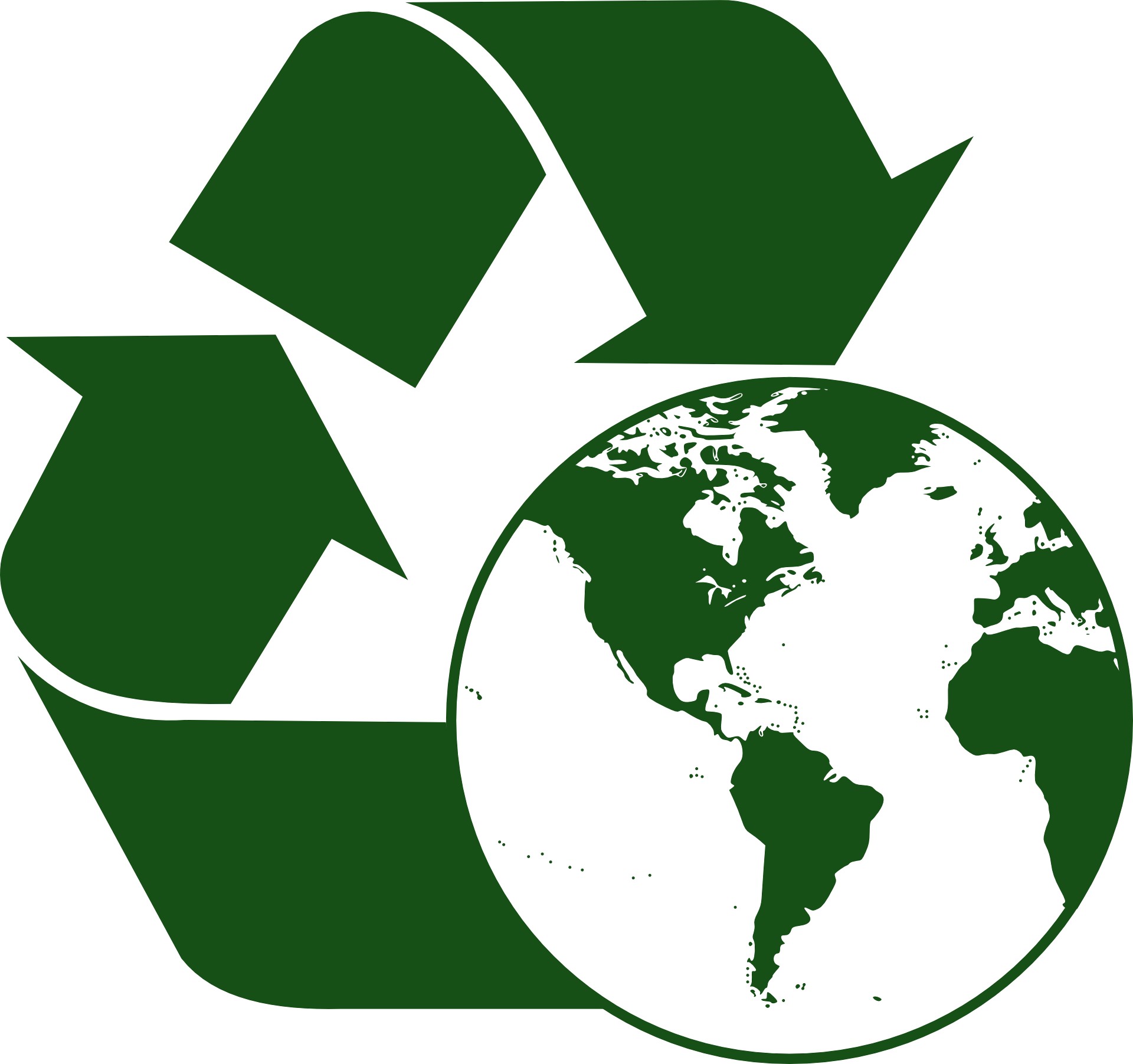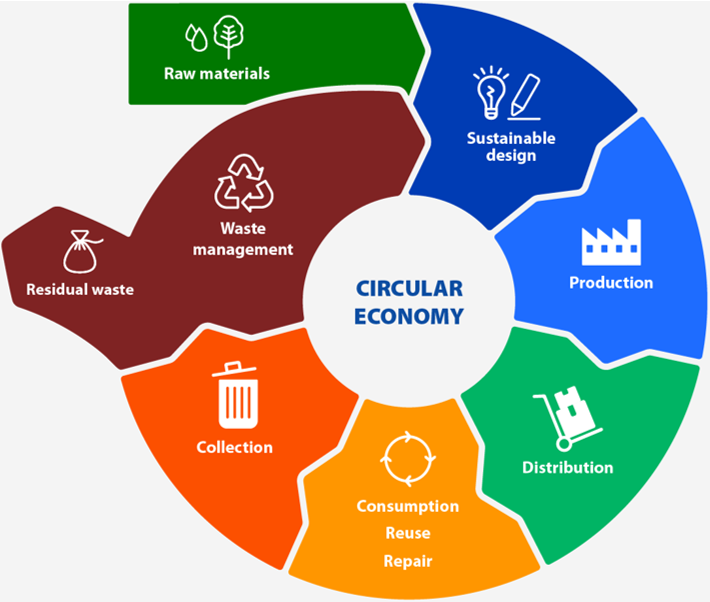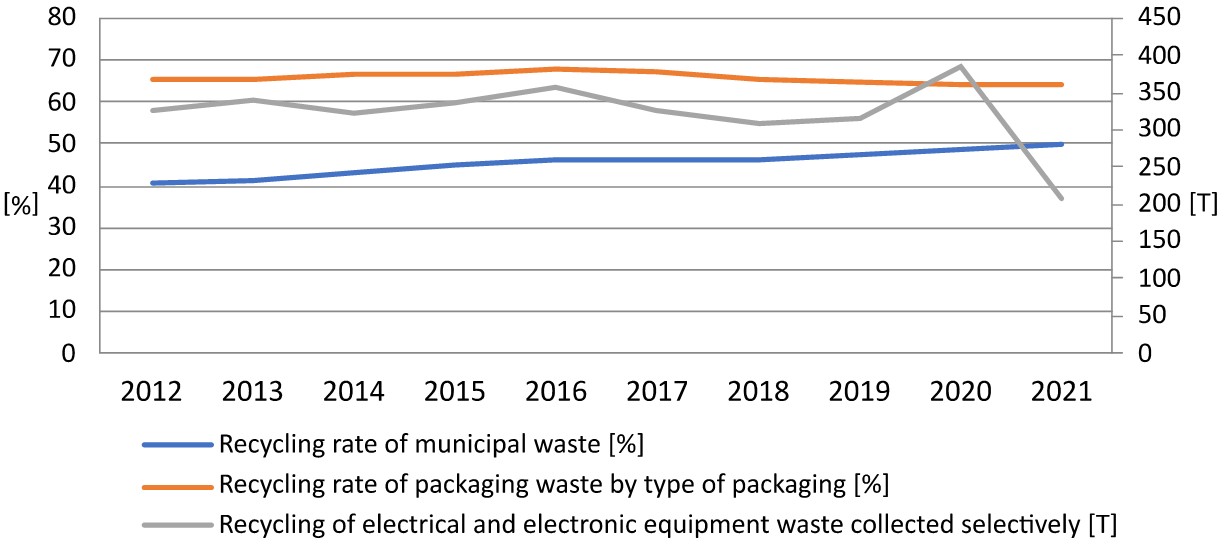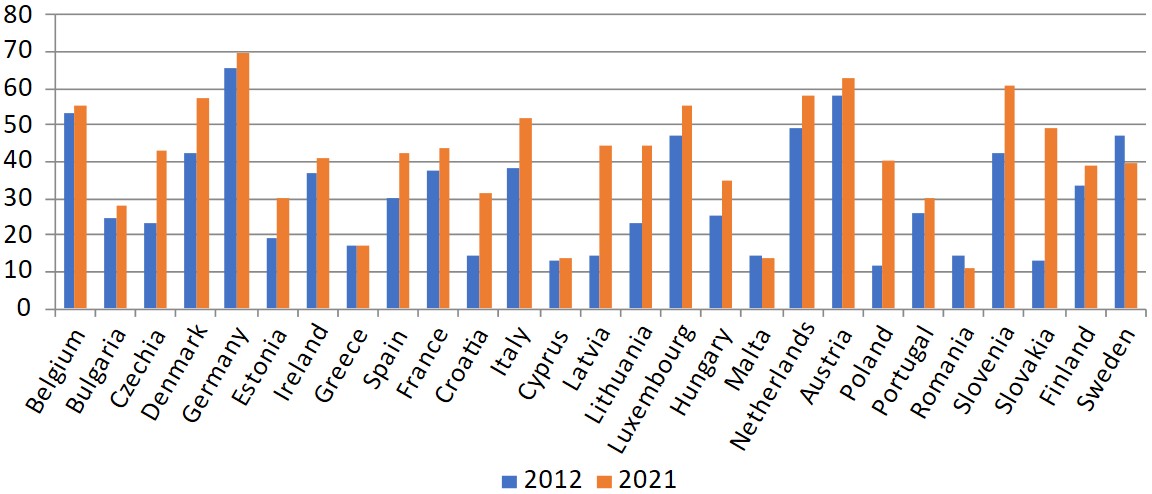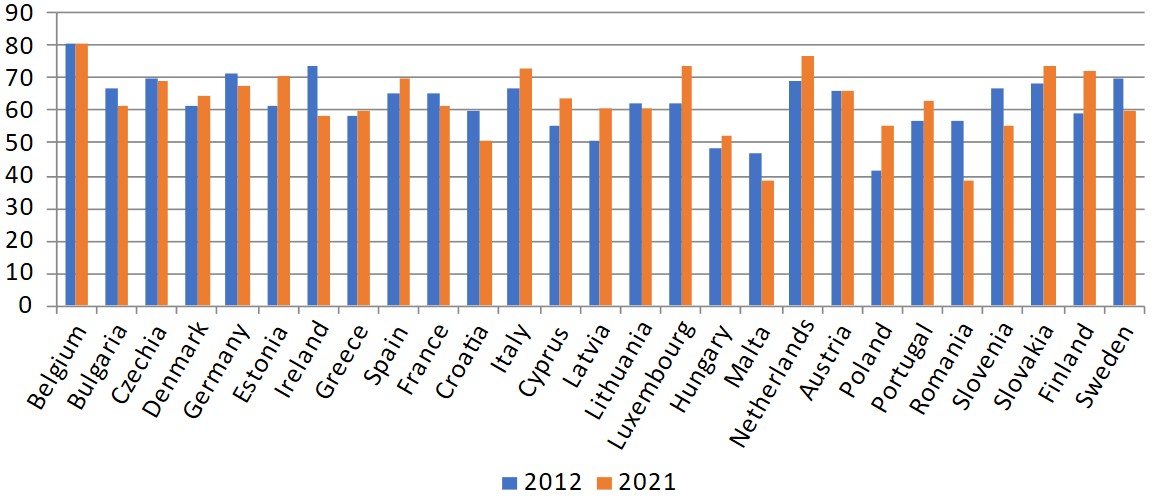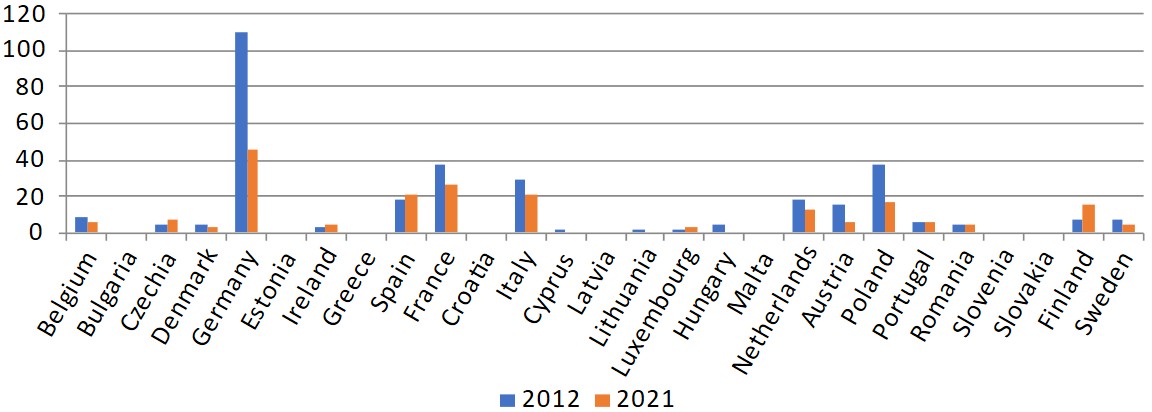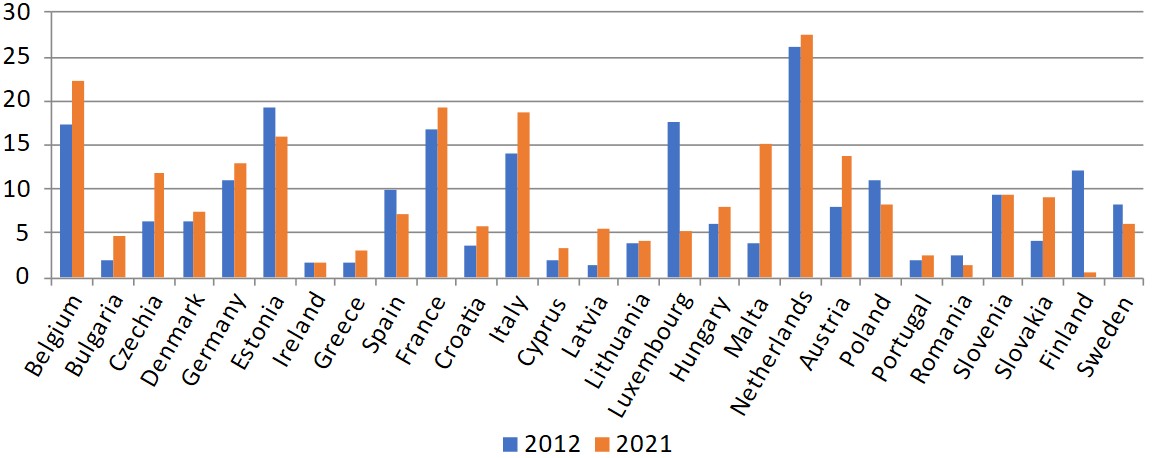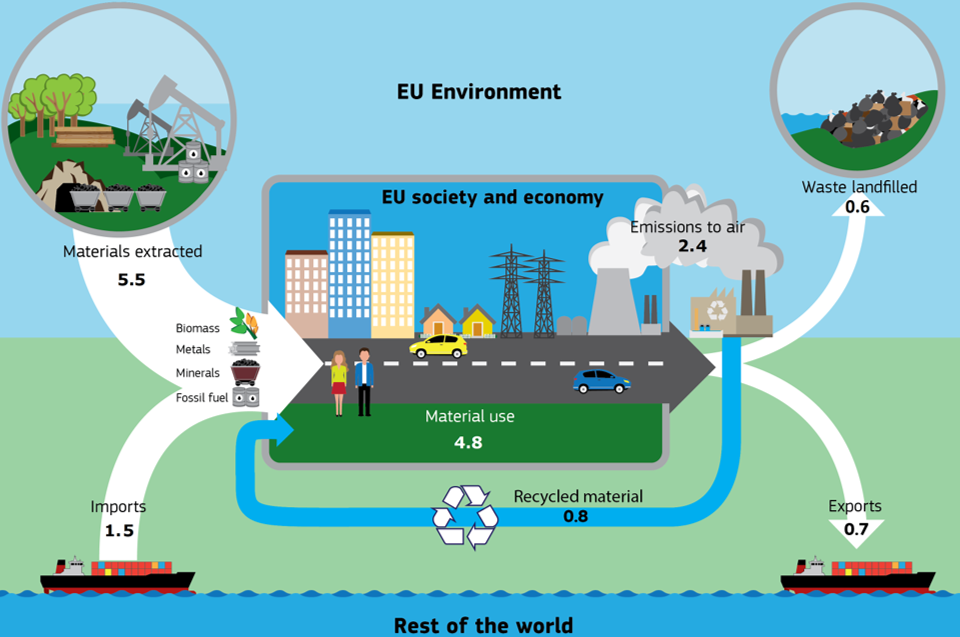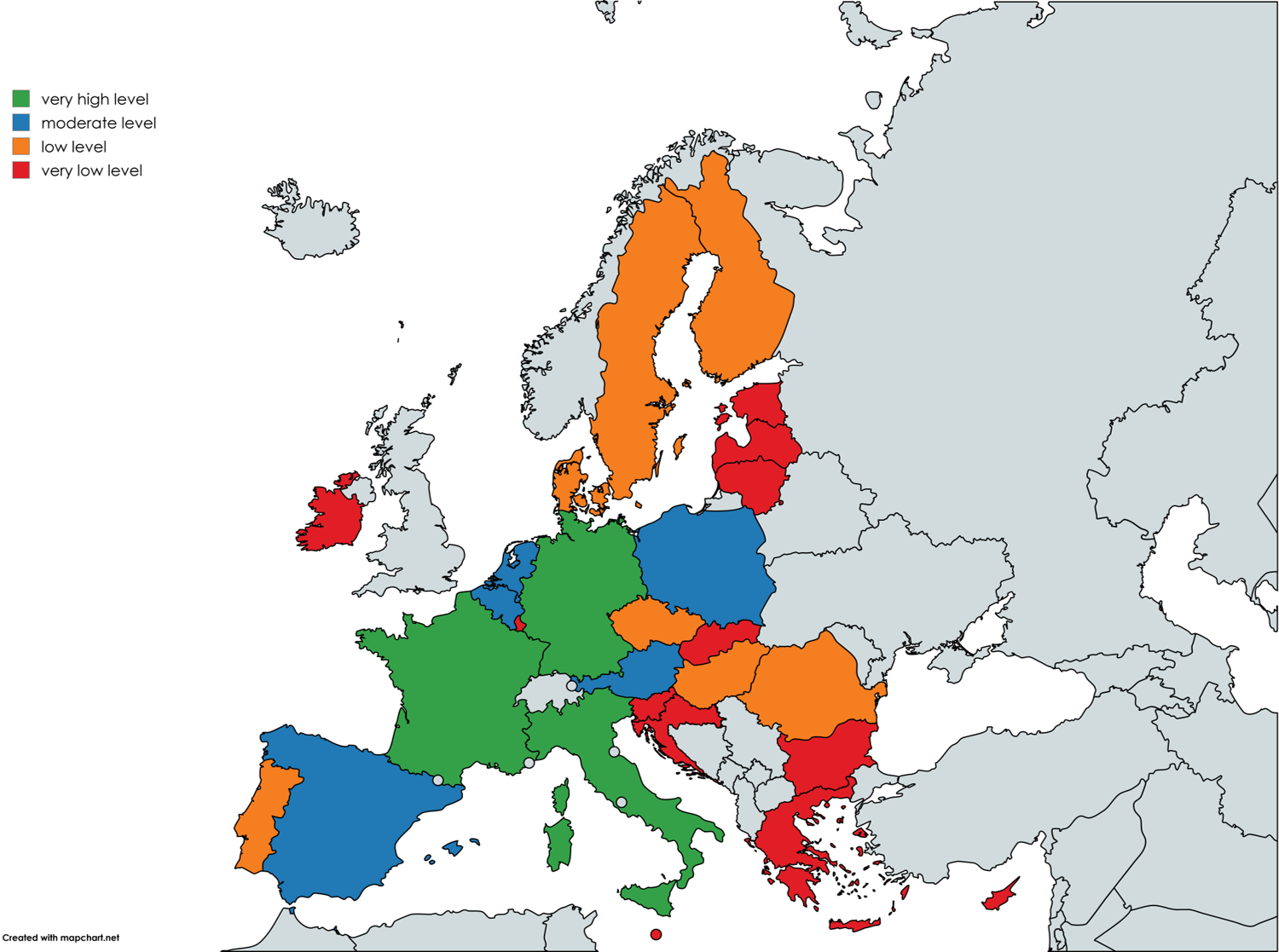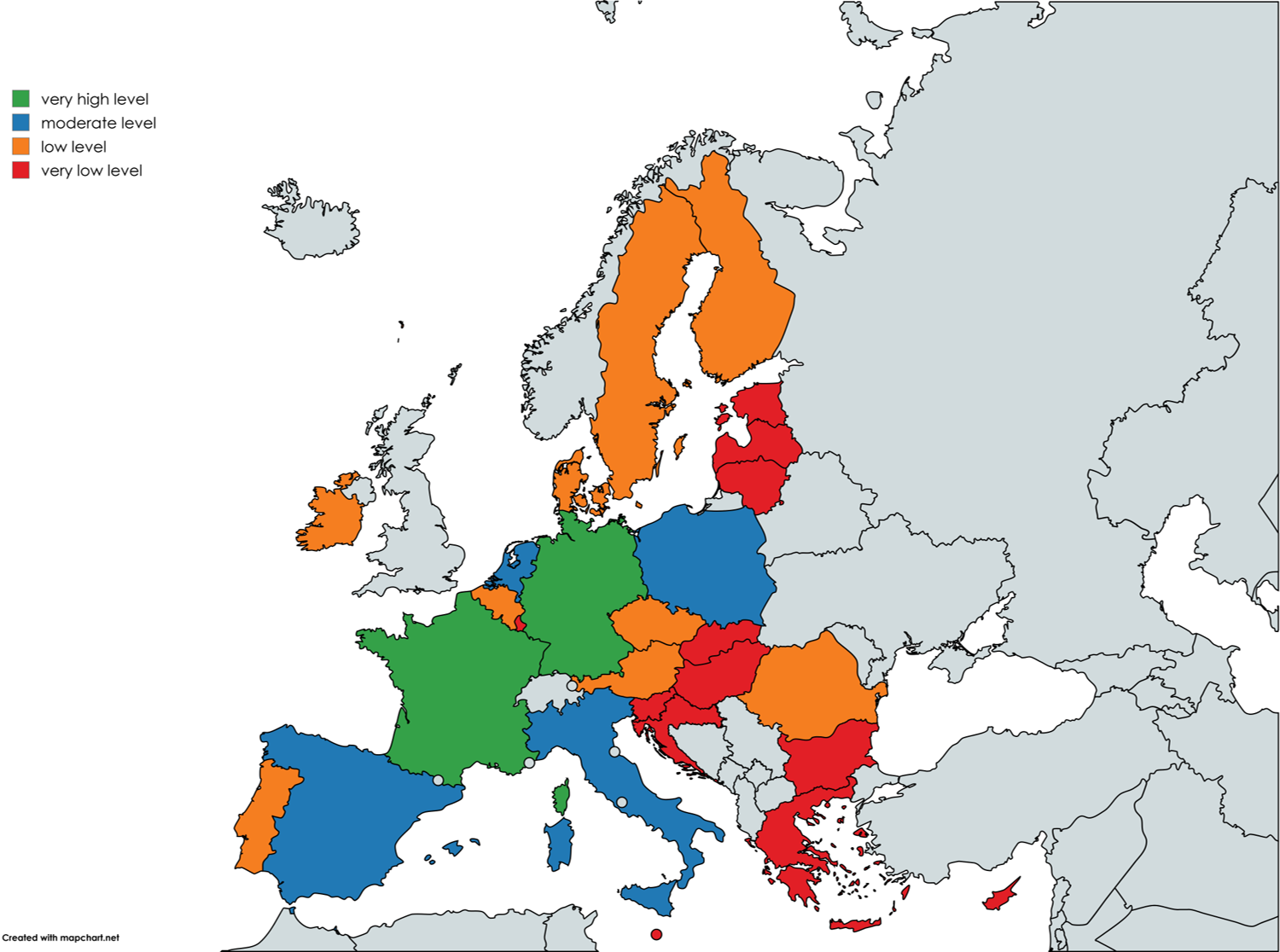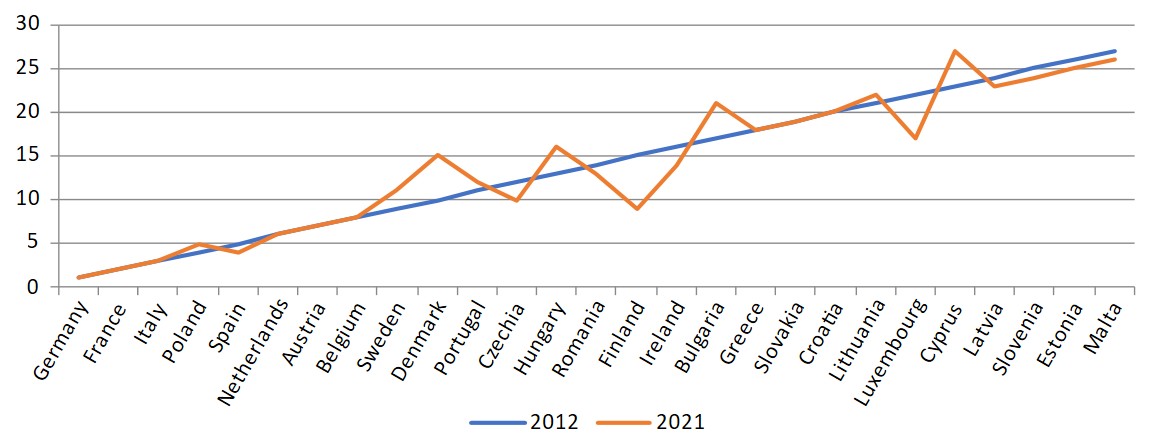Scopus Indexed
Scopus Indexed
Article Peer-Reviewed
Open
Peer Review
Peer Review
Level of Competitiveness and Innovation in the Circular Economy of the European Union
1
Department of Food Production and Safety, Carpathian State College in Krosno, 38-400 Krosno, Poland
2
Department of Law and Social Sciences, Jan Kochanowski University in Kielce, 25-406 Kielce, Poland
3
Department of Law and Administration, Maria Curie-Skłodowska University, 20-400 Lublin, Poland
†
These authors contributed equally to this work.
*
For correspondence.
Academic Editor:
Received: 23 July 2024 Accepted: 13 January 2025 Published: 1 February 2025
This article is part of the Special Issue Economic Growth and Environmental Degradation.
Abstract
Sustainable development, as a cornerstone of contemporary political frameworks, is closely linked to the concept of the circular economy (CE). In the context of the European Union (EU), the transition towards a circular economy is considered a key element in achieving a sustainable, low-carbon, resource-efficient, and competitive economic model. The aim of this article is to partially fill the research gap regarding the connections between recycling, the use of secondary raw materials, and the innovation and competitiveness of EU member states’ economies. Based on a critical literature review, it was identified that there is a lack of comprehensive studies analyzing these relationships in the context of EU countries, which serves as the starting point for this research. The study applies CE indicators proposed by the European Commission, which, after conducting a literature review, were deemed the most appropriate for analysis. Descriptive statistics were used to analyze data on recycling rates and the use of secondary raw materials in EU countries. Additionally, the study was enhanced by an analysis of the impact of recycling and circular economy practices on innovation and competitiveness in various countries, conducted through a multidimensional comparative analysis using the Hellwig's method. The analysis results indicate a significant positive correlation between recycling rates, the use of secondary raw materials, and economic innovation and competitiveness. Specifically, Germany, with a municipal waste recycling rate of 69.3% in 2021, ranks at the top among countries in terms of the number of patents and investments in technologies related to the circular economy. The findings suggest that national policies should focus on supporting innovation and increasing recycling efficiency, which could benefit both environmental protection and economic growth. The results also indicate that countries with lower recycling rates may face limitations in terms of innovation and competitiveness. In the case of these countries, policies focusing on investments in recycling technologies and the promotion of innovation could help improve performance in both areas.
Graphical Abstract
Figures in this Article
Would you like to reuse the images? Contact the journal editorial office to obtain high-quality versions.
Keywords
sustainable development goals; circular economy sectors; competitiveness and innovation; waste management; secondary raw materials
Copyright © 2025
Ślusarczyk et al. This article is distributed under the terms of the Creative Commons Attribution License (CC BY 4.0), which permits unrestricted use and distribution provided that the original work is properly cited.
Funding
This research received no specific grant from any funding agency in the public, commercial, or not-for-profit sectors.
Cite this Article
Ślusarczyk, B., Kozłowska, M. A., & Kozłowska, Z. A. (2025). Level of Competitiveness and Innovation in the Circular Economy of the European Union. Highlights of Sustainability, 4(1), 16–37. https://doi.org/10.54175/hsustain4010002
References
1.
Kozłowska, M. (2022). Efekty ekonmiczne realizacji strategii zrównoważonego rozwoju transport w Unii Europejskiej (in Polish). Spatium.
2.
Rogall, H. (2010). Ekonomia zrównoważonego rozwoju. Teoria i praktyka (in Polish). Zysk i S-ka.
3.
Stappen R. K. (2006). A Sustainable World is Possible – Der Wise Consensus: Problemlösungen für das 21. Jahrhundert (in German). Exkurs zu Nachhaltigkeitswissenschaft.
4.
Stoczkiewicz, M. (2001). Zasada zrównoważonego rozwoju jako zasada prawa (in Polish). Prawo i Środowisko, 1(25), 125–139.
5.
Grabowska, G. (2001). Europejskie prawo ochrony środowiska (in Polish). Wydawnictwa Prawnicze PWN.
6.
Europen Commission. (n.d.). Consequences of climate change. https://climate.ec.europa.eu/climate-change/consequences-climate-change_en (accessed 25 January 2025).
7.
Europen Commission. (2018). A Clean Planet for all. A European strategic long-term vision for a prosperous, modern, competitive and climate neutral economy. Communication from the Commission to the European Parliament, The European Council, The Council, The European Economic and Social Committee, The Committee of The Regions and The European Investment Bank.
8.
IPCC. (2018). Global Warming of 1.5 ºC. https://www.ipcc.ch/sr15 (accessed 23 August 2024).
9.
Badyda, A. J. (2010). Zagrożenia środowiska ze strony transportu (in Polish). Nauka, 4, 115–125.
10.
Europen Commission. (n.d.). Energy, Climate change, Environment – Air. https://ec.europa.eu/environment/air/sources/road.htm (accessed 24 August 2024).
11.
United Nations. (2024). The 2024 Revision of World Population Prospects. https://population.un.org/wpp/ (accessed 24 August 2024).
12.
Mysłowski, P. (2013). Rola i znaczenie zasady zrównoważonego rozwoju w prawie administracyjnym – zagadnienia ogólne (in Polish). Białostockie Studia Prawnicze, 14, 253–264.
13.
Sommer, J. (2005). Prawo a koncepcja zrównoważonego rozwoju (in Polish). In A. Papuziński (Ed.), Zrównoważony rozwój. Od utopii do praw człowieka. BARNTA.
14.
Kozłowska, M. (2022). Gospodarka Obiegu Zamkniętego w Unii Europejskiej – poziom wtórnego wykorzystania materiałów (in Polish). In Ł. Wójtowicz (Ed.), MIK-21. Międzynarodowa Innowacyjnośc i Konkurencyjność w XXI w. Aspekty społeczne. INW SPATIUM.
15.
Hobson, K., & Lynch, N. (2016). Diversifying and de-growing the circular economy: Radical social transformation in a resource-scarce word. Futures, 82, 15–25. https://doi.org/10.1016/j.futures.2016.05.012
16.
Europen Commission. (2015). Closing the loop - An EU action plan for the Circular Economy, Communication from The Commission to The European Parliament, The Council, The European Economic and Social Committee and The Committee of The Regions.
17.
Stahel, W., & Reday, G. (1976). Jobs for tomorrow: the potential for substituting manpower for energy. Vantage Press.
18.
Stahel, W., & Börlin, M. (1987). Economic Strategies of Durability - Longer Product-life of Goods as Waste Prevention Strategy. The Product-Life Institute.
19.
Daly, H. E. (Ed.). (1973). Toward a Steady-State Economy. W.H. Freeman & Co Ltd.
20.
Pearce, D., & Turner, R. (1990). Economics of Natural Resources and the Environment. Johns Hopkins University Press.
21.
Stahel, W. (1982). The product life factor. In G. S. Orr (Ed.), An Inquiry into the Nature of Sustainable Societies. The Role of the Private Sector. Area Research Centre.
22.
McDonough, W., & Braungart, M. (2002). Cradle to Cradle: Remaking the Way We Make Things. North Point Press.
23.
Adamczykn, J. (2016). Założenia gospodarki okrężnej w zakresie produkcji (in Polish). Systemy Wspomagania w Inżynierii Produkcji, 2(14), 11–19.
24.
Foltynowicz, Z., & Stróżyk, K. (2015). Europa bez odpadów. Kompleksowe zarządzanie gospodarką odpadami (in Polish). In O. Wielkopolski (Ed.), Kompleksowe Zarzadzanie Gospodarką Odpadami Integrated waste management (pp. 25–36). Polskie Zrzeszenie Inżynierów i Techników Sanitarnych.
25.
Zarębska, J., & Joachimiak-Lechman, K. (2016). Circular economy - the role of the Environmental Life Cycle Assessment, opportunities, barriers and challenges. Journal of Reverse Logistics, 1, 5–9.
26.
European Parliament. (2020). Infografika: Emisje gazów cieplarnianych w Unii Europejskiej wg sektora i krajów (in Polish). https://www.europarl.europa.eu/topics/pl/article/20180301STO98928/infografika-emisje-gazow-cieplarnianych-w-unii-europejskiej (accessed 13 July 2024).
27.
Eurostat. (2022). Extra-EU trade of raw materials tripled since 2002. https://ec.europa.eu/eurostat/en/web/products-eurostat-news/-/ddn-20220425-1 (accessed 13 July 2024).
28.
European Parliament. (2023). Gospodarka o obiegu zamkniętym: definicja, znaczenie i korzyści (wideo) (in Polish). https://www.europarl.europa.eu/topics/pl/article/20151201STO05603/gospodarka-o-obiegu-zamknietym-definicja-znaczenie-i-korzysci-wideo (accessed 13 July 2024).
29.
Castillo-Díaz F. J., Belmonte-Ureña, L. J., Diánez-Martínez, F., & Camacho-Ferre, F. (2024). Challenges and perspectives of the circular economy in the European Union: A comparative analysis of the member states. Ecological Economics, 224, 1–10. https://doi.org/10.1016/j.ecolecon.2024.108294
30.
Decision No 1600/2002/EC of the European Parliament and of the Council of 22 July 2002 laying down the Sixth Community Environment Action Programme. https://eur-lex.europa.eu/legal-content/EN/TXT/HTML/?uri=CELEX:32002D1600 (accessed 1 November 2024).
31.
Commission recommendation No 2013/179/UE of 9 April 2013 on the use of common methods for measuring environmental performance in the life cycle of products and organizations and reporting on it. https://eur-lex.europa.eu/legal-content/PL/TXT/HTML/?uri=CELEX:32013H0179 (accessed 1 November 2024).
32.
Europen Commission. (n.d.). First circular economy action plan. https://environment.ec.europa.eu/topics/circular-economy/first-circular-economy-action-plan_en (accessed 3 July 2024).
33.
Europen Commission. (2019). Report from the commission to the european parliament, the council, the european economic and social committee and the committee of the regions on the implementation of the Circular Economy Action Plan.
34.
Europen Commission. (2019). Communication from the commission to the european parliament, the european council, the council, the european economic and social committee and the committee of the regions The European Green Deal.
35.
Europen Commission. (2020). Changing how we produce and consume: New Circular Economy Action Plan shows the way to a climate-neutral, competitive economy of empowered consumers. https://ec.europa.eu/commission/presscorner/detail/pl/ip_20_420 (accessed 1 July 2024).
36.
European Parliament. (2022). Prawo do naprawy: działania UE dla ułatwienia napraw (in Polish). https://www.europarl.europa.eu/topics/pl/article/20220331STO26410/prawo-do-naprawy-dzialania-ue-dla-ulatwienia-napraw (accessed 1 July 2024).
37.
European Parliament. (2020). European Parliament resolution of 10 February 2021 on the New Circular Economy Action Plan (2020/2077(INI)).
38.
Mazur-Wierzbicka, E. (2021). Circular economy: advancement of European Union countries. Environmental Sciences Europe, 33, 111. https://doi.org/10.1186/s12302-021-00549-0
39.
Stiglitz, J. E., Fitoussi, J.-P., & Durand, M. (2019). Poza PKB - Mierzmy To Co Ma Znaczenie Dla Rozwoju Społeczno Gospodarczego (in Polish). OCED. https://www.oecd.org/content/dam/oecd/pl/publications/reports/2018/11/beyond-gdp_g1g98ae6/e2b4d21b-pl.pdf (accessed 1 November 2024).
40.
The World Business Council for Sustainable Development (WBCSD). (2017). The future of business is circular. https://docs.wbcsd.org/2017/06/CEO_Guide_to_CE.pdf (accessed 1 November 2024).
41.
Ellen MacArthur Foundation. (2013). Towards the circular economy. https://www.ellenmacarthurfoundation.orgtowards-the-circular-economy-vol-1-an-economic-and-business-rationale-for-an (accessed 1 November 2024).
42.
Government of the Netherlands. (2016). A Circular Economy in the Netherlands by 2050. https://circulareconomy.europa.eu/platform/sites/default/files/17037circulaireeconomie_en.pdf (accessed 1 November 2024).
43.
The Monitoring and Statistics Directorate (SOeS). (2017). 10 Key Indicators for Monitoring the Circular Economy. https://temis.documentation.developpement-durable.gouv.fr/docs/Temis/0086/Temis-0086452/22978_2017_ENG.pdf (accessed 1 November 2024).
44.
Kulczycka, J. (Ed.). (2019). Gospodarka o obiegu zamkniętym w polityce i badaniach naukowych (in Polish). IGSMiE PAN. https://circulareconomy.europa.eu/platform/sites/default/files/the_circular_economy_in_policy_and_scientific_research.pdf (accessed 1 November 2024).
45.
Council of Ministers (Portugal). (2017). LEADINGTHE TRANSITION: Action Plan for Circular Economy in Portugal 2017-2020. https://circulareconomy.europa.eu/platform/sites/default/files/strategy_-_portuguese_action_plan_paec_en_version_3.pdf (accessed 1 November 2024).
46.
Garcia-Bernabeu, A., Hilario-Caballero, A., Pla-Santamaria, D., & Salas-Molina, F. (2020). A Process Oriented MCDM Approach to Construct a Circular Economy Composite Index. Sustainability, 12(2), 618. https://doi.org/10.3390/su12020618
47.
Giannakitsidou, O., Giannikos, I., & Chondrou, A. (2020). Ranking European countries on the basis of their environmental and circular economy performance: A DEA application in MSW. Waste Management, 109, 181–191. https://doi.org/10.1016/j.wasman.2020.04.055
48.
Marino, A., & Pariso, P. (2020). Comparing European countries’ performances in the transition towards the Circular Economy. Science of the Total Environment, 729, 138142. https://doi.org/10.1016/j.scitotenv.2020.138142
49.
Parchomenko, A., Nelen, D., Gillabel, J., & Rechberger, H., (2019). Measuring the circular economy - A Multiple Correspondence Analysis of 63 metrics. Journal of Cleaner Production, 210, 200–216. https://doi.org/10.1016/j.jclepro.2018.10.357
50.
Haas, W., Krausmann, F., Wiedenhofer, D., & Heinz, M. (2015). How Circular is the Global Economy?: An Assessment of Material Flows, Waste Production, and Recycling in the European Union and the World in 2005. Journal of Industrial Ecology, 19(5), 765–777. https://doi.org/10.1111/jiec.12244
51.
Zorpas, A. A. (2024). The hidden concept and the beauty of multiple “R” in the framework of waste strategies development reflecting to circular economy principles. Science of the Total Environment, 952, 175508. https://doi.org/10.1016/j.scitotenv.2024.175508
52.
Eurostat. (n.d.). Circular economy Database. https://ec.europa.eu/eurostat/web/circular-economy/database (accessed 10 July 2024).
53.
Hondroyiannis, G., Sardianou, E., Nikou, V., Evangelinos, K., & Nikolaou, I. (2024). Circular economy and macroeconomic performance: Evidence across 28 European countrie. Ecological Economics, 215, 108002. https://doi.org/10.1016/j.ecolecon.2023.108002
54.
Lacko, R., Hajduová, Z., & Dula, R. (2024). Development of environment al performance and circular economy in the European Union countries: the case of “post-2004” members. Frontiers in Environmental Science, 12. https://doi.org/10.3389/fenvs.2024.1467370
55.
Vargas, V., Durnoi, A., Teodorescu, C. A., & Delcea, C. (2024). Mapping Circular Economy Performance: EU Member States Analysis and Insights. Proceedings of the International Conference on Business Excellence, 18(1), 1398–1412.
56.
Balcerzar, A. (2015). Wielowymiarowa analiza spójności społecznej w krajach Unii Europejskiej w kontekście strategii Europa 2020 (in Polish). In B. Bartniczak & K. Trzeciak (Eds.), Aktualne trendy w zarządzaniu środowiskiem. Ad Rem.
57.
Hellwig, Z. (1981). Wielowymiarowa analiza porównawcza i jej zastosowanie w badaniach wielowymiarowych obiektów gospodarczych (in Polish). In W. Welfe (Ed.), Metody i modele ekonomiczno-matematyczne w doskonaleniu zarządzania gospodarką socjalistyczną. PWE.
58.
Bąk, A. (2018), Zastosowanie metody wielowymiarowej analizy porównawczej do oceny stanu środowiska w województwie dolnośląskim (in Polish). Wiadomości Statystyczne, 63, 7–20.
59.
Maráková, V., Dyr, T., & Wolak-Tuzimek, A. (2016). Factors of tourism’s competitiveness in the European Union countries. Economics and Management, 3, 92–109.
60.
Krakowiak-Bal, A. (2005). Wykorzystanie wybranych miar syntetycznych do budowy miary rozwoju infrastruktury technicznej (in Polish). Infrastruktura i Ekologia Terenów Wiejskich, 3, 71–82.
61.
Europen Commission. (2024). Circular economy - material flows. https://ec.europa.eu/eurostat/statistics-explained/index.php?oldid=516747 (accessed 7 July 2024).
Metrics
Loading...
Journal Menu
Journal Contact
Highlights of Sustainability
Editorial Office
Highlights of Science
Avenida Madrid, 189-195, 3-3
08014 Barcelona, Spain
08014 Barcelona, Spain
Cathy Wang
Managing Editor
